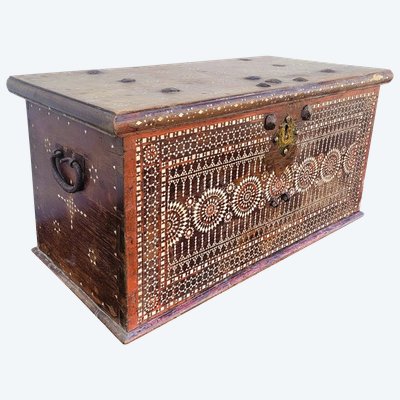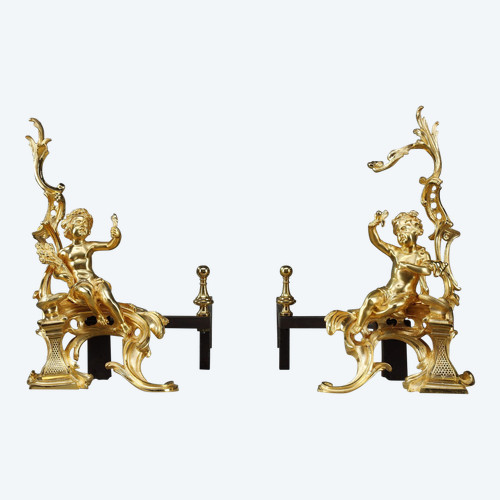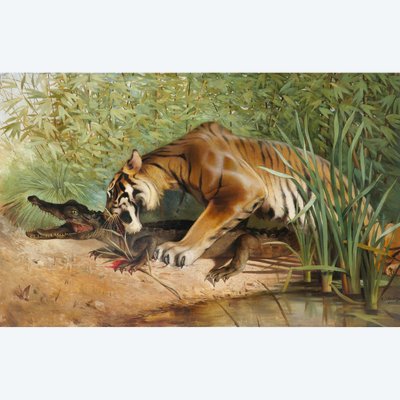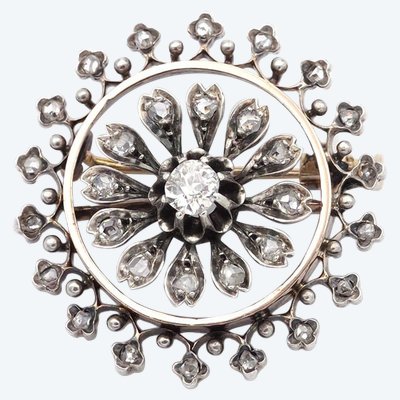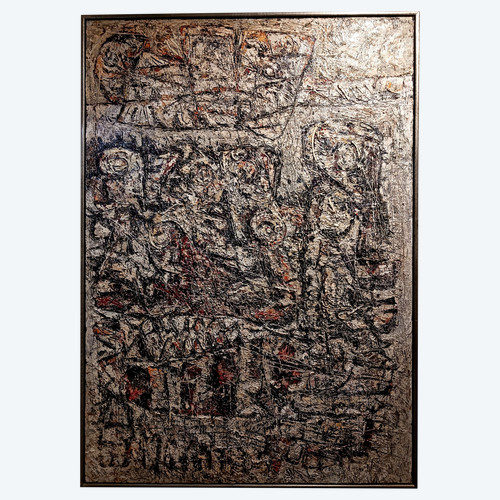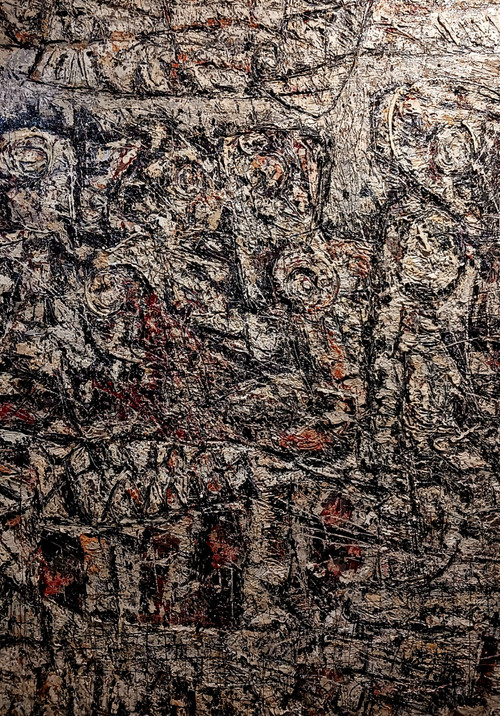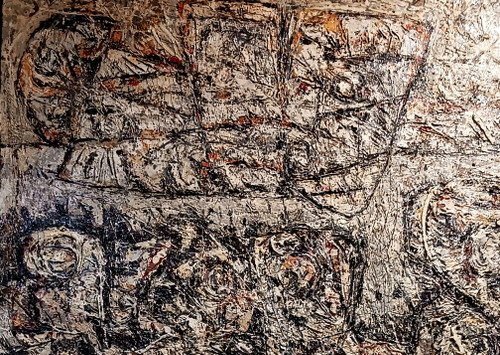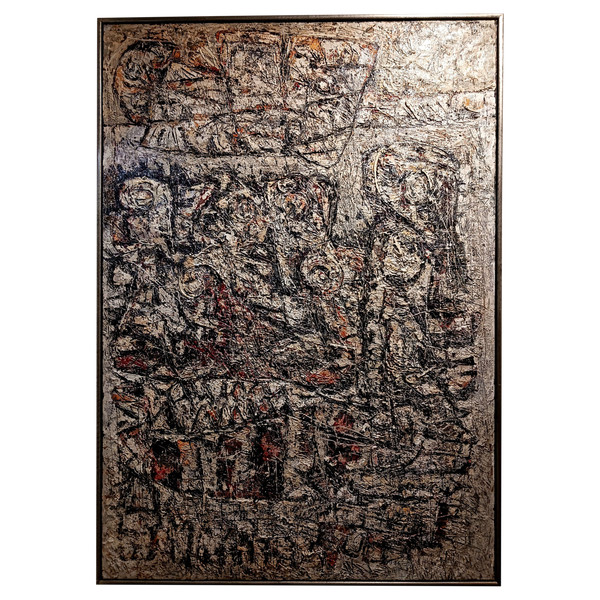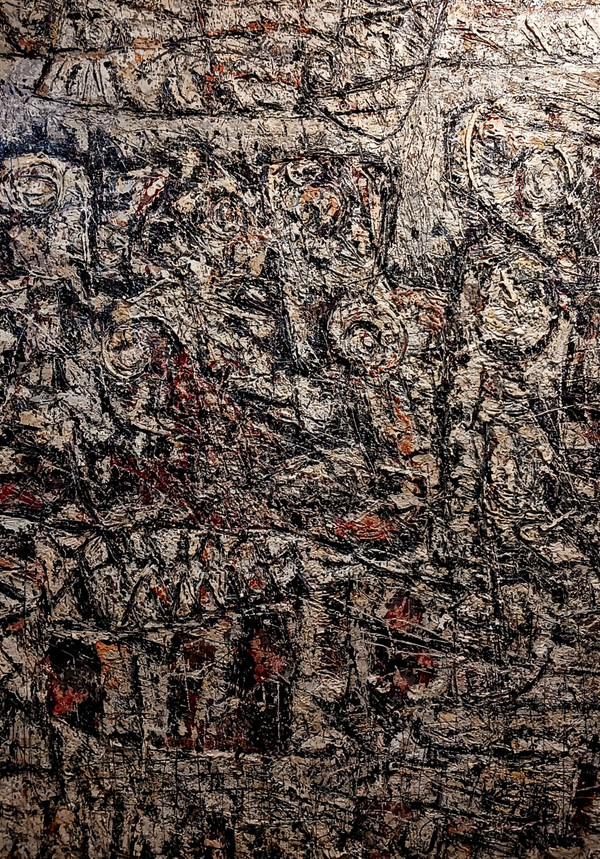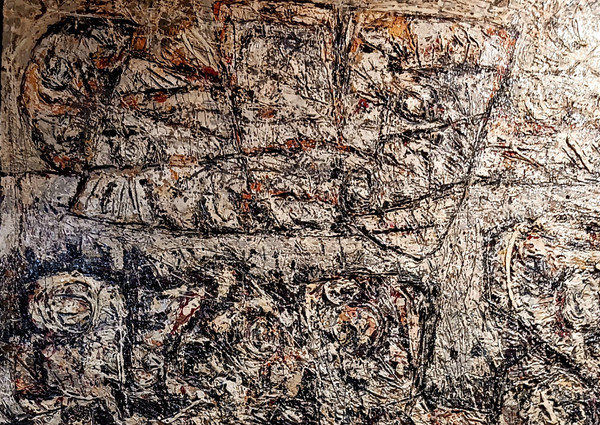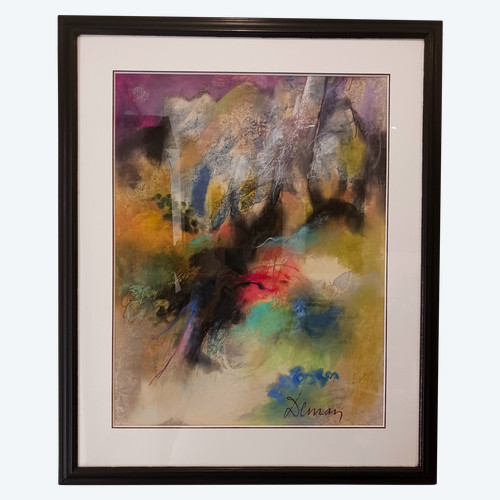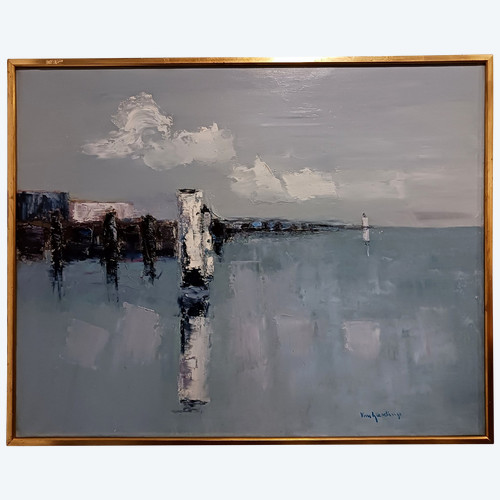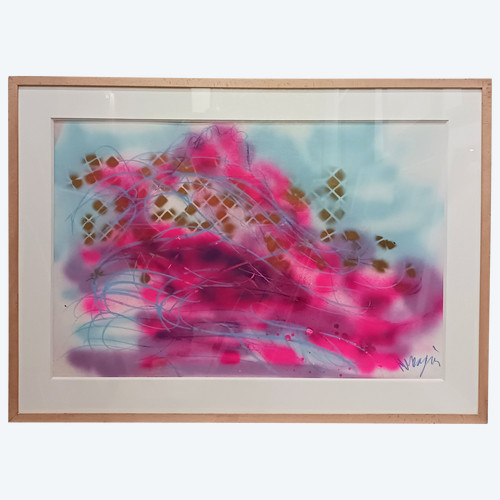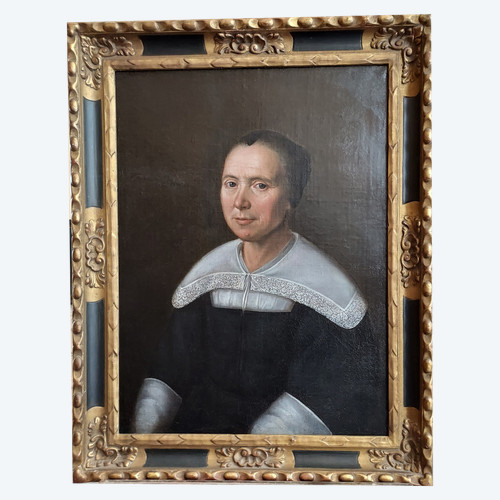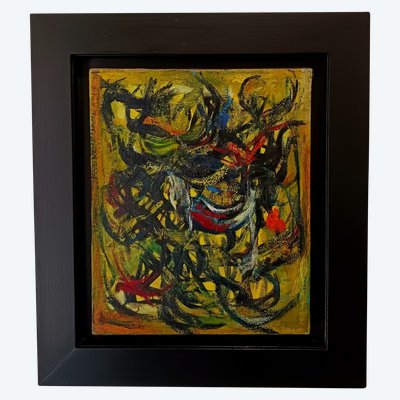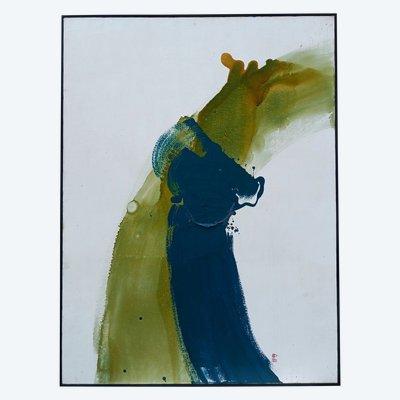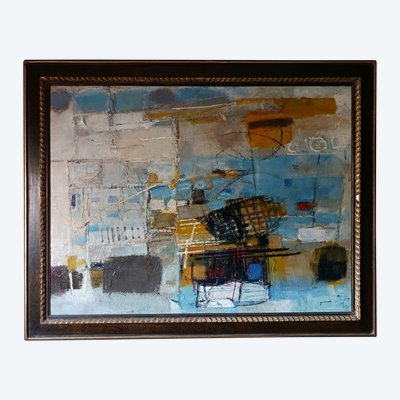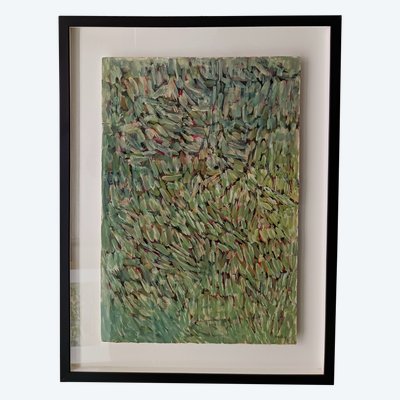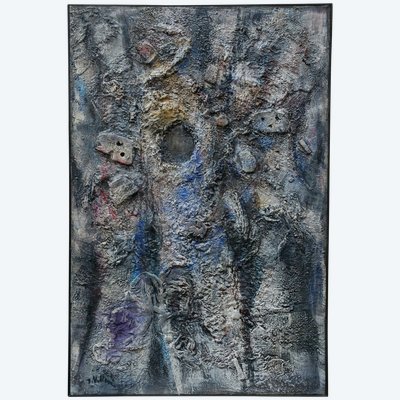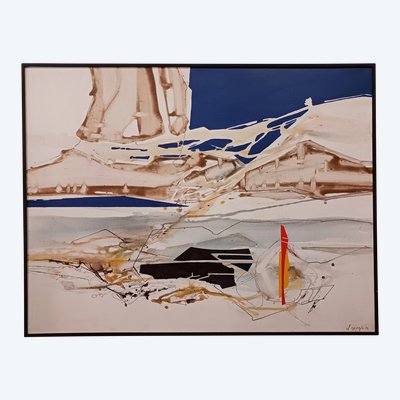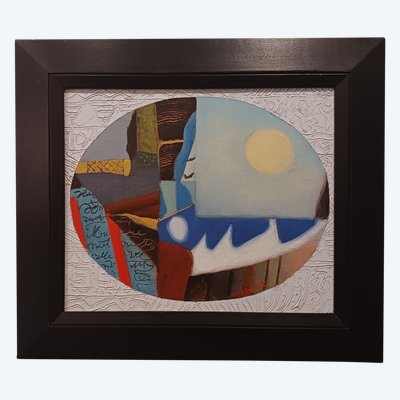This description has been translated and may not be completely accurate. Click here to see the original
EXCEPTIONAL WORK BY THE ARTIST. RARE IN THIS FORMAT. 160X115CM SIGNED DATE58.
POSITANO PERIOD.
Jan Meyer (Jan Meijer) was born in Assen 1927 (Nederland) and grew upon his father's farm in the countryside. He began drawing during the German occupation. Around 1944, he visited the studio of Werkman, whose advice influenced him. Meyer developed a working method that took his work away and beyond the careful provincial life depicted in his earlier work.
After the war, he met Evert Rinsema, one of the oldest members of "De Stijl" and an old friend of Theo van Doesburg. Through him, he discovered and admired the work of Mondrian and became acquainted with the Dada movement in Holland. Rinsema also introduced Meyer to Kirchner's expressionist work of art. Meyer's life became a search for equilibrium between the nostalgic values of a balanced world and his busy, expressive character.
During a short period, Meyer studied at the Rijksakademie and the Rijksopleinding voor Tekenleraren in Amsterdam. At the end of the 1940's, Meyer's work was exhibited together with the work of the "de Ploeg" artists. His palette was dominated by mauve, black and dark blue, with yellow planes breaking through.
The rough style of the French artist Dubuffet is visible on Meyer's paintings of the 1950's, even though he didn't know the painter. From 1948, Meyer frequently exhibited his work at the The Eendt gallery based in Amsterdam. His first solo exhibition abroad took place in 1957 in Paris, at the Dina Vierny gallery.
His exhibition at the Premio Lissone during a stay in Italy marked an important period in the artist's life. Famous abstract artists frequented this place, such as Fontana, Saura, Klein, Appel and Corneille. Jan Meyer's works can be assigned to the category of the" informele materie-schilders" (Lyric Abstraction). ln 1958, Jan Meyer was selected for the 'Grand prix international de peinture' while living in Nicolas de Staël's atelier in Antibes. ln 1960 he settled permanently outside Paris, in Dieudonné, a little village in the Oise region. His frequent journeys - mostly to Greece - were an inexhaustible source of inspiration. Large thick layers of paint are placed over each other, often with a dissipation of many colors.
Meyer's work can be found in several private and public collections such as in the Musée d'Art Moderne de la ville de Paris, the Tate gallery in London, the Gemeentemuseum in The Hague and the Stedelijk Museum in Schiedam.
Ref: U6QNBNISIU

